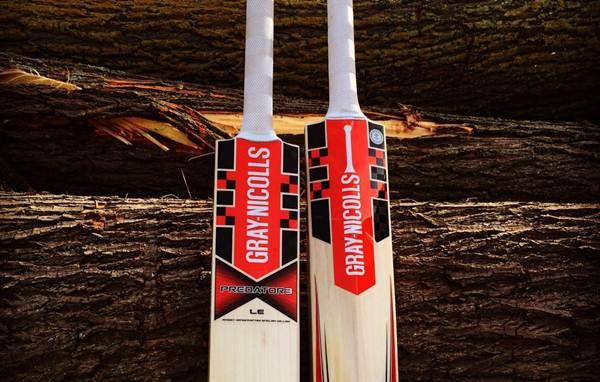New code of laws by MCC on bat sizes and players' behaviour
View : 1.3K
2 Min Read


New Code of Laws have been introduced by the so-called Guardians of Cricket who put a limit to the thickness of cricket bats and provide runs as a fine for bad behaviour with October 1 set as the scheduled date for introducing the changes.
The Marylebone Cricket Club came up with restrictions on the thickness of bats after a tedious debate over the dominance of bat over the ball on Monday. Professional cricket will see the changes injected into the rule book first which will then be applied to amateur cricket also.
Players like Aussie hard-hitting opener David opener who have been using bats with a thicker spine all this while will have to adjust with a much thinner cricket bat. T20 cricket has led to the alterations in bat thickness where the batsmen tend to attack the ball from the very first over.
108 millimetres of width, 6 millimetres in depth and 40 millimeters for the edges will be the maximum dimensions of a cricket bat that will be allowed to use.
There will the use of a bat gauge to ensure that the new limits are clung to in a professional game. Umpires are already handed with small gauges to check the shape of the cricket ball which must be of a certain weight.
The new edition of the Code of Laws will be released on March 20. MCC’s Head of Cricket John Stephenson stated that the game has significantly progressed towards the better in the last 14 years and it is high time to make some changes rather than depending upon modifications.
“We felt the time was right for a new code to tidy up many of the piecemeal changes made since 2000,” Stephenson said. “The bat size issue has been heavily scrutinized and discussed. We believe the maximum dimensions we have set will help redress the balance between bat and ball, while still allowing the explosive, big hitting we all enjoy.”
The MCC with its headquarters based at Lord’s in London determine the laws of the game while The International Cricket Council is the authority for the administration of the sport.
Also read – Australian newspapers take a dig at Virat Kohli for onfield banter with Smith and Renshaw on Day 2
Other law changes involved the handling of run outs and gave umpires more discretion to penalize players for poor on-field behavior, including excessive appealing, making contact with players or officials or intimidation.
A batsman will not be considered run out if the batsman has already touched across the crease but the bails are dislodged when the bat is in the air or bounces after touching the crease. Changes in rules will make it easy for a bowler to get a batter run out at the non strikers end before the ball is bowled.
Umpires will be increased power to sanctions players immediately depending on the severity of the bad behavior, with levels of punishments ranging from a warning, to the awarding of five penalty runs to the opposing team or temporary or permanent removal of a player from the game.
“We felt the time had come to introduce sanctions for poor player behavior,” Stephenson said. “Research told us that a growing number of umpires at grass roots level were leaving the game because of it.
“Hopefully these sanctions will give them more confidence to handle disciplinary issues efficiently, whilst providing a deterrent to the players.”
The MCC has been predicting a change in the dimensions of the bats used in international cricket for months, which contains former cricketers like Mike Brearley of England and Ricky Ponting of Australia.
Also read – OPPO to be the new sponsor for Team India till 2022
Brearley had also given a statement to the ESPN Cricinfo that it is time for a change and players, manufacturers and administrators had been talked with.
“It was pointed out to us that, in 1905, the width of bats was 16 millimeters and that, by 1980, it had increased to 18 millimeters. It is now an average, in professional cricket, of 35-40 and sometimes up to 60 millimeters. That shows how fast the change has been.”
Former Aussie skipper Ricky Ponting also mentioned that the overwhelming feedback from players “was a need for the restoration of a balance between bat and ball.
“We feel that in the last few years that it has actually gone a little bit too far in the favor of batsmen, and it is more about mis-hits going for a six,” Ponting said in the article. “One thing we know is we can’t make the grounds bigger, so certainly one of the concerns was the middle of the bat, because of the shape of the bat is increasingly getting bigger and bigger every year.”
The changes would come into action before the Ashes where England and Australia will go head to head.
An Australian newspaper took the opportunity and headlined the news as “Warner’s bat cut down to size before the Ashes”.
The newspaper also illustrated some previous bats that had been banned, including one that was with the width of a set of stumps in the 1770s, a metal version trialed by Australia fast bowler Dennis Lillee in the 1970s and a graphite-backed bat tried by the likes of Ponting in 2006.
Download Our App